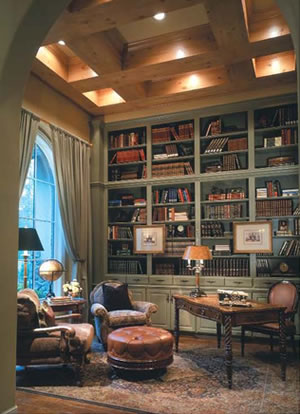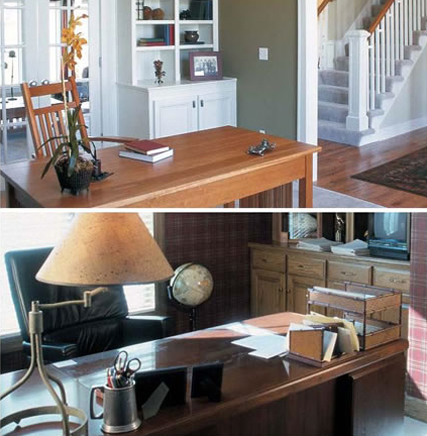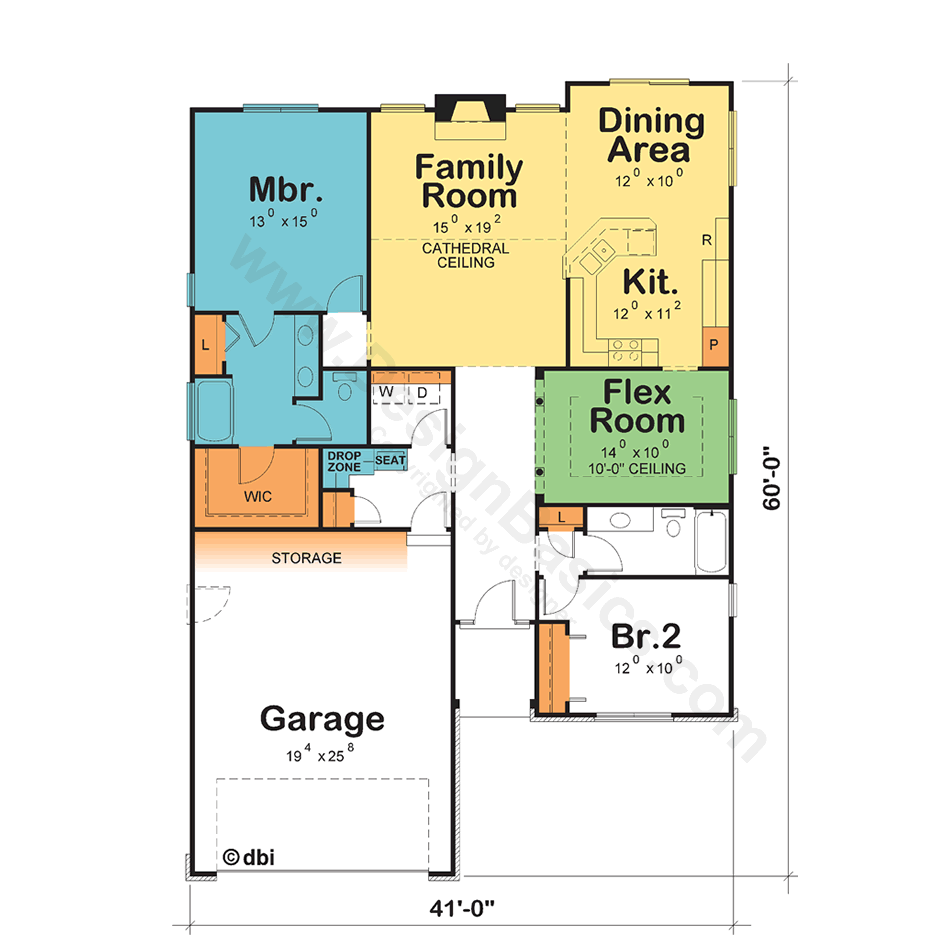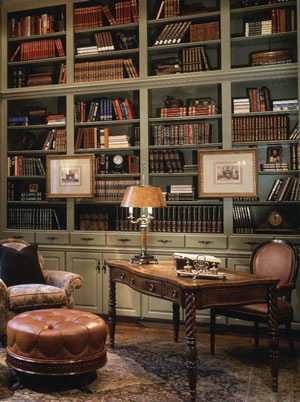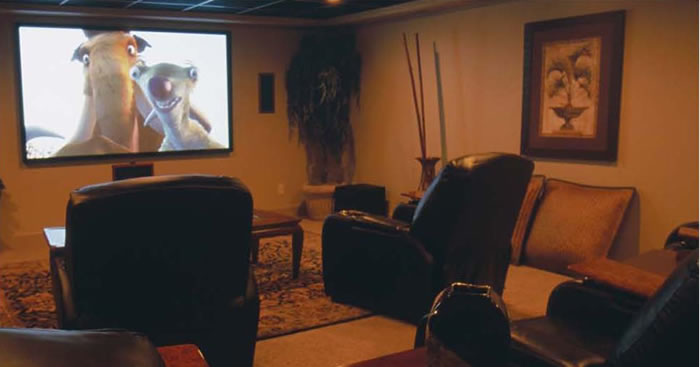Livability at a Glance™
FlexibilityFlexible Living Spaces
 Combine Rooms for In-Laws/Guest Suite
Combine Rooms for In-Laws/Guest Suite
With the aging of America and boomerang children, a house plan that can combine a bedroom and a private bath makes a great suite. If the situation changes, the rooms can be used for other needs. Even more accommodating, some homeowners are utilizing a pair of adjacent secondary bedrooms as an in-law suite. Such arrangements offer considerable privacy, with the in-law suite offering both a sleeping area as well as its own living space.
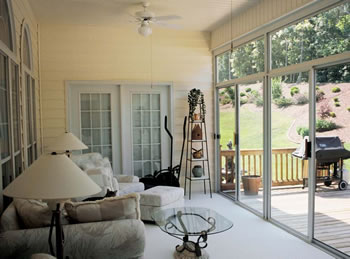 4-Seasons Room
4-Seasons Room
Bringing the outside in – views to the outside are important to many people. Many of us work in an office all day, so we like to incorporate outside living into our lives at home. Whether the area is screened in, enclosed with windows, or just an open patio, it is an important element to daily living.
When asked “What is your favorite place in your home?” a surprising number of people answer their porch or deck. If you can identify with this group, consider adding (operable) windows all around your outdoor living space along with supplemental baseboard heating, enabling you to enjoy this space anytime!
Playroom
Whether it is your own family, company with children, or neighborhood kids, it is always important that you find a place for a playroom. It helps with everyone’s sanity to keep the noise and toys away from adults. Ironically, a kids’ playroom just might be one of your most prized luxuries in your new home. By having most of their toys, games, puzzles, etc., in this one room, keeping the rest of the house presentable an achievable reality!
Home Schooling Room
Increasingly popular, home schooling parents have a particular challenge with today’s more open home designs–the need for privacy so their kids can concentrate on their studies. When planning this space, consider storage, workspaces, lighting (especially natural light), and computer hook-ups.
Ideally, a room in the home can be dedicated to schooling. More often, it will double as a school room and serve another purpose at other times, so make sure the space is flexible. Pay particular attention to floor coverings if school or other activities are likely to include messy projects, crafts, etc.
Craft/Gardening Areas
When it comes to unwinding from our hurried lives or pursuing something we really enjoy; many people like to relax with a special hobby or craft. How many times do you have a project spread out on the kitchen or dining room table? An area out of public view would take the stress out of constant picking up. Therefore, having room in the home to pursue these and other hobbies in and of itself can also contribute to de-stressing, especially if ‘works-in-progress’ can be left undisturbed.
The primary considerations for such spaces are related to the type of activity. Gardening, for example, is ideally suited for an area with a sink and proximity to an outside door. Sewing and needlework projects are enhanced by high light levels. Woodworking fits well with concrete floors for easy clean-up, plus plenty of electrical outlets for various power tools.
Whatever your favorite pursuit, what things could you do with your home that would enhance the experience? How about special task lighting? This is sometimes a hard area to identify, simply because we learn to cope with the shortcomings inherent to our present situation. The answers lie in things that frustrate you when engaged in these activities.
Bedroom/Bath Arrangements for Blended Families
Blending families can be a difficult task but picking a home plan that has been designed to address bedroom/bath needs makes the task so much easier. Especially when combining boys and girls from two families into one new family, thought needs to be given regarding bedroom and bathroom accommodations. Everyone needs a sense of privacy and a sense of space they can call their own. And when it comes to sharing a bathroom, dual lavatories are a big plus, as is a separate toilet/shower area.
Home Offices (His and Her)
Kevin and Tina both work at home. Sharing an office is not working so they found a plan that gives them his and her offices. They can work in their own spaces but more than that; it makes for a pleasant marriage.
People who succeed in working from home attest to the importance of having a dedicated home office space where they can focus on their work. Today’s economy coupled with downsizing and early retirement is giving birth to numerous cottage industries. The type of work you do out of your home will dictate your space needs. Pay careful attention to storage, lighting, and any special wiring as well as privacy.
Formal Dining
Candlelight, soft music, ample room for guests, and great conversation make dinner parties a delight. The formal dining room also makes an excellent backdrop for a great dining room suite. Since entertaining inevitably involves food, look at how your home enhances the dining experience. Be mindful of seating, which always becomes an issue. Homes designed with an open floorplan, especially ones in which the dining room flows uninterrupted into a great room, offer numerous entertaining options.
Room to Grow
An item no one wants to think about is outgrowing their home. But the reality is that family situations change and our needs and wants for space in the home change too. The solution? Unfinished areas of the home, especially on a second level, over a garage, or in a basement.
You may not need this space when you first move into your home, but it will give you room to add a bedroom, media room, playroom, etc. Families can grow into these spaces and configure them as the need arises, without having the initial cost of finishing the space affecting their mortgage qualifications or mortgage payment.
Flexible Design
‘Change’ is all around us, having become the norm in American society. And as our lives change, we begin to appreciate homes that were designed to adapt to our changing situations. It’s called flexible design.
To some extent, we’ve all grown up with the ‘flexible’ concept, such as when we turned a spare bedroom into a TV room by replacing the bed with a sofa and chair. But flexible design goes further than that–having a lot to do with how rooms are accessed and adjacent rooms. While flexible living doesn’t change the footprint of a home, it does encourage looking for ways to change spaces to meet a particular need. It typically involves minor changes to the design, such as adding, removing or repositioning doors, closets, shelving, etc.
The example plan illustrates the flex room concept well. This efficient design works nicely for many buyer profiles, from singles to couples to smaller families. It will also accommodate larger families when built on a basement foundation and part of the basement space is finished.
A flex room is so labeled to suggest buyers themselves determine how the space will be used. Many people would envision the flex room in this home used as a third bedroom. When doing so, the passage to the kitchen is eliminated and the entrance into this space is via an alcove and door conveniently placed near the bathroom. Statistics also show that after being launched out on their own, 32% of 18-to-34-year-olds returned to their parents’ homes (Pew Research).
Middle adulthood may also mean moving in aging parents no longer able to live independently. With the adjacent bath, this flex room converts nicely as a modest suite.
Another likely utilization of the flex space in this design would be as a formal dining room. At 14′ x 10″ the room is nicely proportioned for an oval table. The entry pillars, 10′ high boxed ceiling and double window enhances the dining experience, as does the easy kitchen connection. A quick review of this home plan elicited uses ranging from “media room,” “library,” and “music room” to “a home-schooling room.” If used as a media room, extra soundproofing measures should be taken into consideration. Homeschoolers, on the other hand, would appreciate plenty of storage and work areas. For even more flexibility, a Murphy bed (one which folds up into the wall) or a daybed means the same space can serve multiple purposes as needed.
But more common was to hear people express their intention that the flex space would become a den or home office. Abundant natural light has been shown to enhance concentration and reduce stress, so in addition to the double window, you may consider adding a skylight. Eliminate the passageway to the kitchen and add a pair of full-lite French doors to the hall entrance helps close off the space when privacy is desired.
You may also want to consider turning bedroom #2, the flex room, and bath into a full guest suite. Well-separated from the owner’s suite, either bedroom #2 or the flex room can function as the actual bedroom, with the other room being a private living space for your guest, boomerang child, or live-in relative. This arrangement also services another emerging trend–an elderly or widowed sibling coming to live with you.
Designs that embody such flexibility are in demand. How you intend to use the space is entirely up to you; but thinking about how a home’s design can adapt to your future needs should be a prime consideration before you build.
